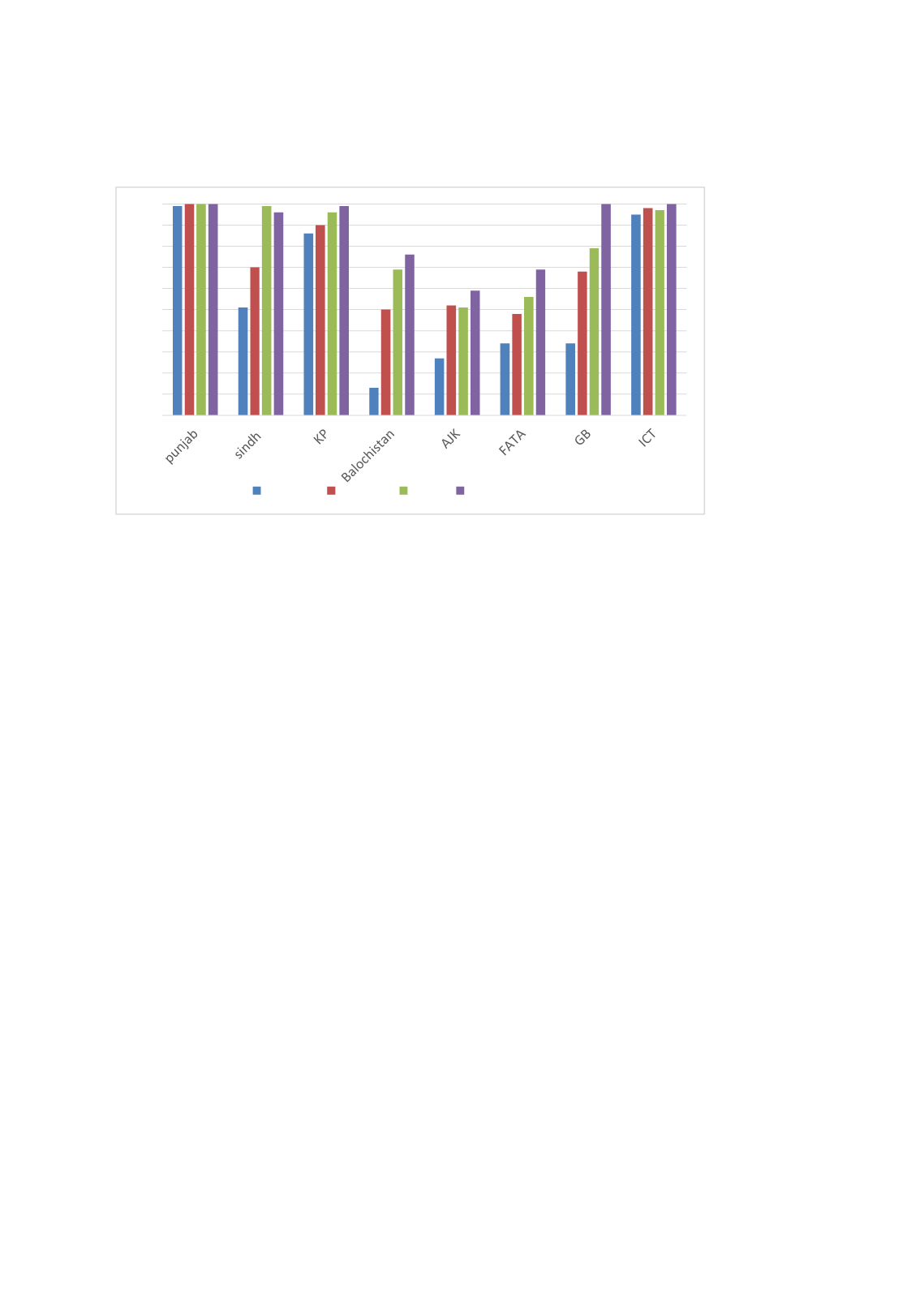

136
Figure 3.3.7: Availability of Toilets (%), By Province/Region and Schooling Level
Source: Pakistan Education Statistics 2015-16
Student-teacher ratios (STR) provide another commonly used measure of school quality.
Appendix Table A9 denotes the student-teacher ratio estimates available using ASER data from
2012-2016. It is clear from the table that the Pakistan-wide STR was 39 students to 1 teacher in
2012 and about 35 students to 1 teacher in 2016 in rural areas. There are some differences
across provinces with KP depicting higher ratios than the national average over the years and
ICT showing some of the lowest. However, it should be noted that the average STR remains
below the benchmark of 40 typically proposed by the government.
STRs, however, may mask the existence of multi-grade teaching which has become a common
strategy to meet MDGs goals and deal with teacher shortages and absences particularly in
remote rural locations. Research on the effects of Multi-grade teaching on student learning to
date has shown mixed results (Little 2008). Many agree that when it is a pedagogical choice that
is accompanied with effective teacher training and materials to support this style of teaching, it
can be as effective as mono-grade teaching. However in many developing contexts, multi-grade
teaching arises due to necessity rather than choice and without the accompanying training and
resources to ensure it is an effective method of teaching children. Nevertheless, this argument
needs to be balanced with the rejoinder that for a vast majority of children in remote and rural
contexts such as in Pakistan, small multi-grade classrooms are often the only type of school to
which they have access. Appendix Table A10 using ASER 2015 and 2016 data indicates that
multi-grade teaching is common practice across both government and private school settings in
primary settings (but less common across private schools). Again there are wide disparities
across provinces but from an equity perspective this finding indicates that there are insufficient
teacher inputs available across both the government and private school settings and in all
likelihood these multi-grade environments are more likely to be located in more remote and
rural locations that already face educational deprivation and social marginalization.
Learning outcomes
Both government-based assessments/measures and independent assessments of learning
outcomes consistently point to alarmingly low learning levels across Pakistan. Appendix Table
A11 and Figure 3.3.8 illustrate the extent of the crisis in the country. According to government
0
10
20
30
40
50
60
70
80
90
100
primary middle high higher secondary
















